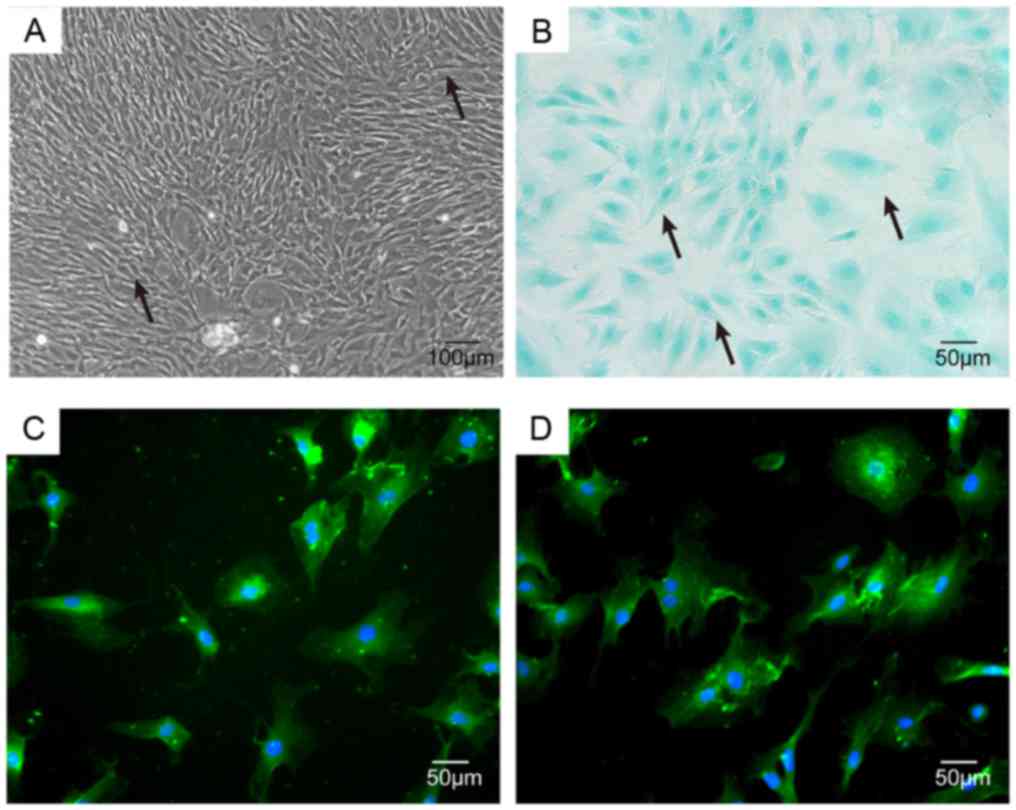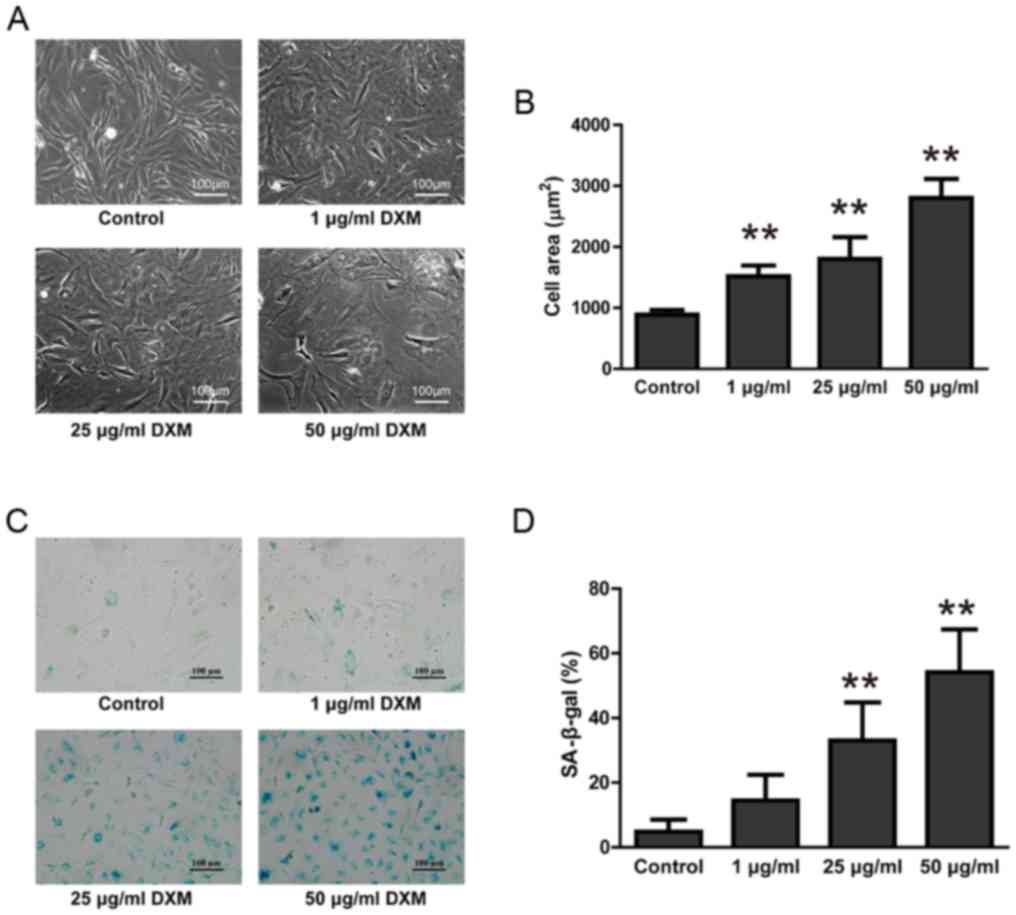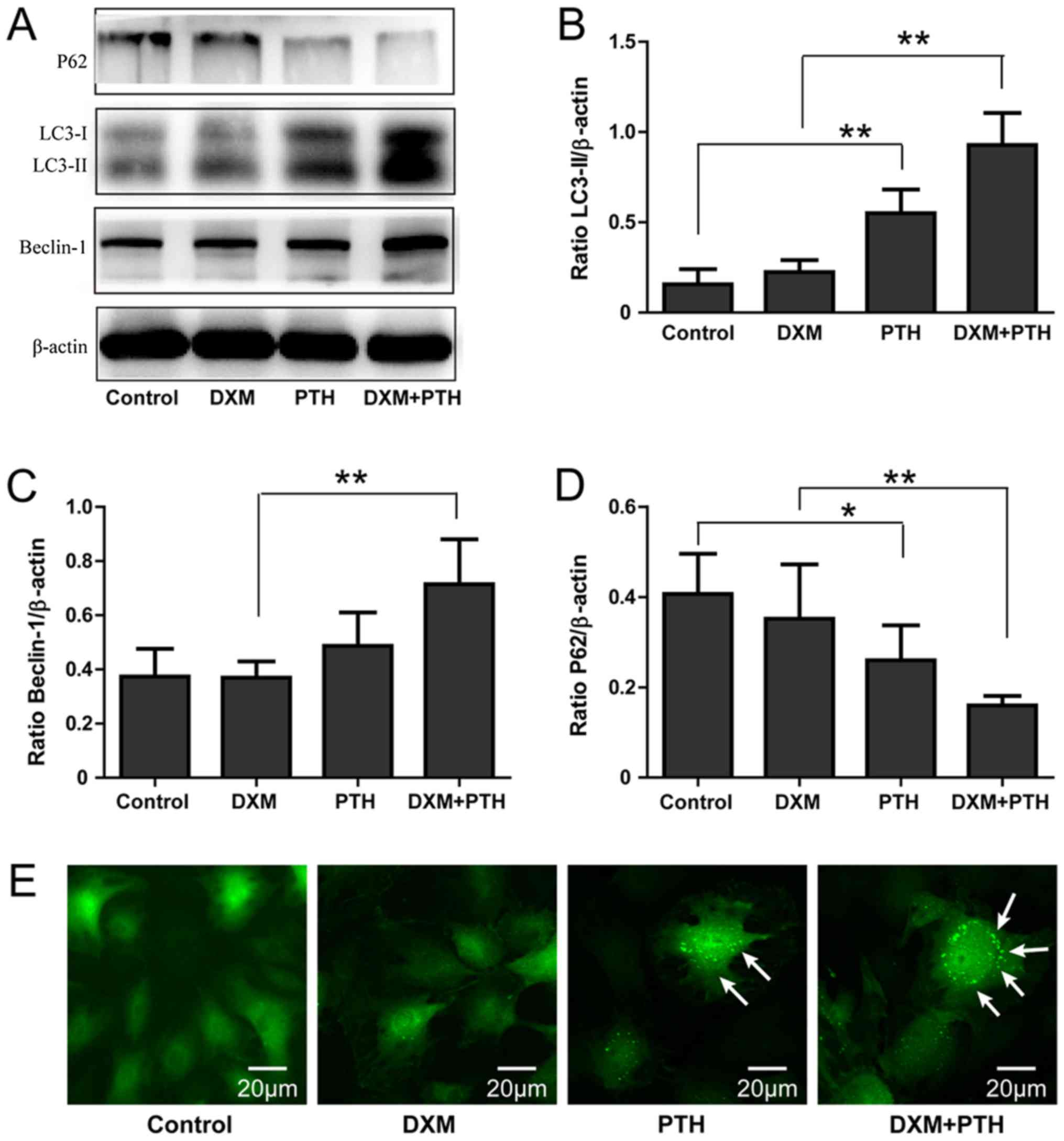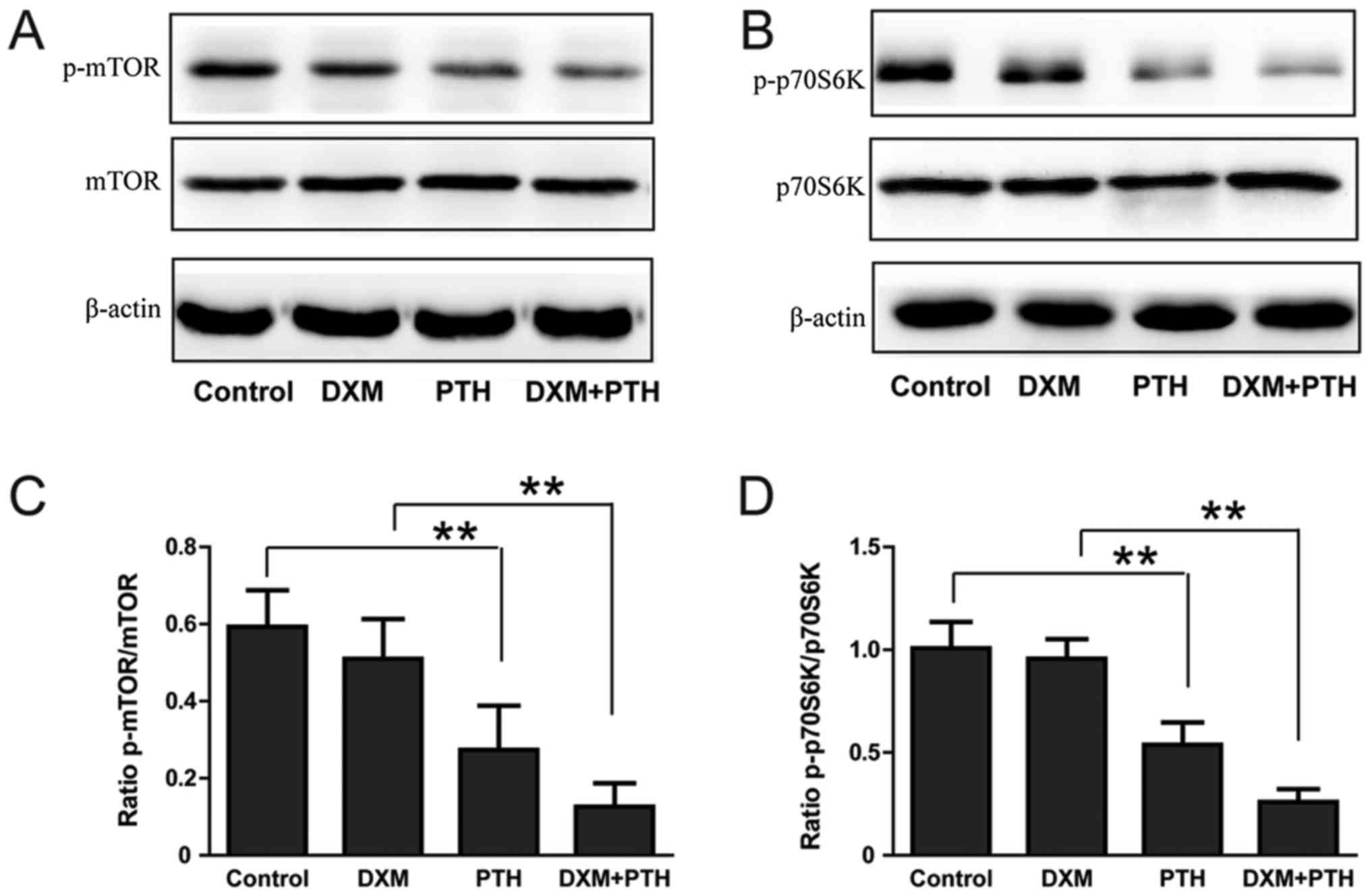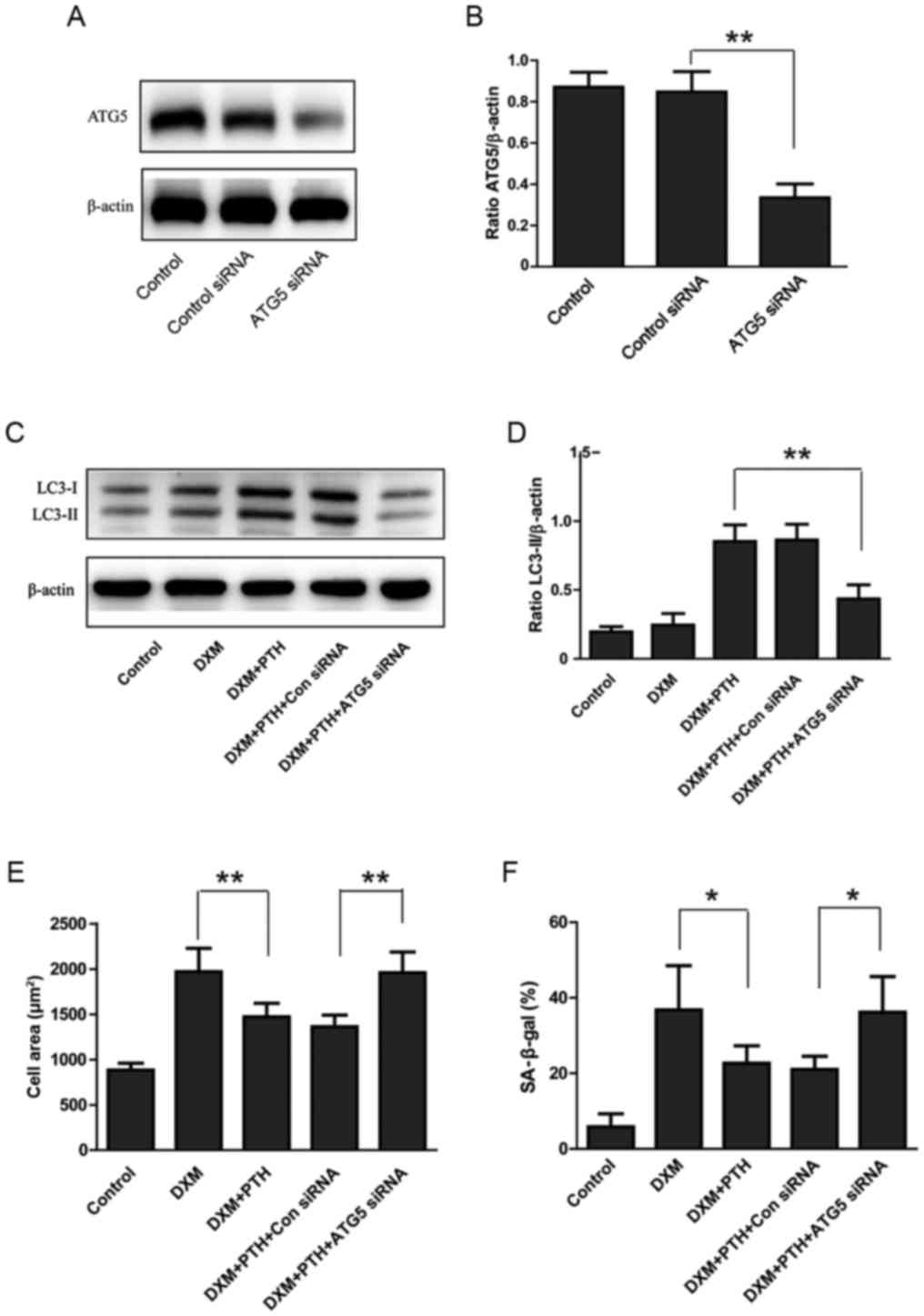|
1
|
Rampersaud YR, Bidos A, Fanti C and
Perruccio AV: The need for multidimensional stratification of
chronic low back pain (LBP). Spine (Phila Pa 1976). 42:E1318–E1325.
2017. View Article : Google Scholar : PubMed/NCBI
|
|
2
|
Hoy D, Bain C, Williams G, March L, Brooks
P, Blyth F, Woolf A, Vos T and Buchbinder R: A systematic review of
the global prevalence of low back pain. Arthritis Rheum.
64:2028–2037. 2012. View Article : Google Scholar : PubMed/NCBI
|
|
3
|
Neidlinger-Wilke C, Galbusera F, Pratsinis
H, Mavrogonatou E, Mietsch A, Kletsas D and Wilke HJ: Mechanical
loading of the intervertebral disc: From the macroscopic to the
cellular level. Eur Spine J. 23 Suppl 3:S333–S343. 2014. View Article : Google Scholar : PubMed/NCBI
|
|
4
|
Jiang L, Zhang X, Zheng X, Ru A, Ni X, Wu
Y, Tian N, Huang Y, Xue E, Wang X and Xu H: Apoptosis, senescence
and autophagy in rat nucleus pulposus cells: Implications for
diabetic intervertebral disc degeneration. J Orthop Res.
31:692–702. 2013. View Article : Google Scholar : PubMed/NCBI
|
|
5
|
Gao C, Ning B, Sang C and Zhang Y:
Rapamycin prevents the intervertebral disc degeneration via
inhibiting differentiation and senescence of annulus fibrosus
cells. Aging (Albany NY). 10:131–143. 2018.PubMed/NCBI
|
|
6
|
Luo Y, Zhang L, Wang WY, Hu QF, Song HP,
Su YL and Zhang YZ: Alendronate retards the progression of lumbar
intervertebral disc degeneration in ovariectomized rats. Bone.
55:439–448. 2013. View Article : Google Scholar : PubMed/NCBI
|
|
7
|
Jia H, Ma J, Lv J, Ma X, Xu W, Yang Y,
Tian A, Wang Y, Sun L, Xu L, et al: Oestrogen and parathyroid
hormone alleviate lumbar intervertebral disc degeneration in
ovariectomized rats and enhance Wnt/β-catenin pathway activity. Sci
Rep. 6:275212016. View Article : Google Scholar : PubMed/NCBI
|
|
8
|
Mizrahi J, Silva M, Keaveny T, Edwards W
and Hayes W: Finite-element stress analysis of the normal and
osteoporotic lumbar vertebral body. Spine (Phila Pa 1976).
18:2088–2096. 1993. View Article : Google Scholar : PubMed/NCBI
|
|
9
|
Madiraju P, Gawri R, Wang H, Antoniou J
and Mwale F: Mechanism of parathyroid hormone-mediated suppression
of calcification markers in human intervertebral disc cells. Eur
Cell Mater. 25:268–283. 2013. View Article : Google Scholar : PubMed/NCBI
|
|
10
|
Zhu L, Chen J, Zhang J, Guo C, Fan W, Wang
YM and Yan Z: Parathyroid Hormone (PTH) induces autophagy to
protect osteocyte cell survival from dexamethasone damage. Med Sci
Monit. 23:4034–4040. 2017. View Article : Google Scholar : PubMed/NCBI
|
|
11
|
Chen CH, Ho ML, Chang LH, Kang L, Lin YS,
Lin SY, Wu SC and Chang JK: Parathyroid hormone (1–34) ameliorated
knee osteoarthritis in rats via autophagy. J appl physiol (1985).
124:1177–1185. 2018. View Article : Google Scholar : PubMed/NCBI
|
|
12
|
Yin H, Wang S, Zhang Y, Wu M, Wang J and
Ma Y: Zuogui Pill improves the dexamethasone-induced osteoporosis
progression in zebrafish larvae. Biomed Pharmacother. 97:995–999.
2018. View Article : Google Scholar : PubMed/NCBI
|
|
13
|
He JL, Dong XH, Li ZH, Wang XY, Fu ZA and
Shen N: Pterostilbene inhibits reactive oxygen species production
and apoptosis in primary spinal cord neurons by activating
autophagy via the mechanistic target of rapamycin signaling
pathway. Mol Med Rep. 17:4406–4414. 2018.PubMed/NCBI
|
|
14
|
Quan M, Park SE, Lin Z, Hong MW, Park SY
and Kim YY: Steroid treatment can inhibit nuclear localization of
members of the NF-kB pathway in human disc cells stimulated with
TNF-α. Eur J Orthop Surg Traumatol. 25 Suppl 1:S43–S51. 2015.
View Article : Google Scholar : PubMed/NCBI
|
|
15
|
Zaman F, Chrysis D, Huntjens K, Chagin A,
Takigawa M, Fadeel B and Sävendahl L: Dexamethasone differentially
regulates Bcl-2 family proteins in human proliferative
chondrocytes: Role of pro-apoptotic Bid. Toxicol Lett. 224:196–200.
2014. View Article : Google Scholar : PubMed/NCBI
|
|
16
|
Hong D, Chen HX, Yu HQ, Wang C, Deng HT,
Lian QQ and Ge RS: Quantitative proteomic analysis of
dexamethasone-induced effects on osteoblast differentiation,
proliferation and apoptosis in MC3T3-E1 cells using SILAC.
Osteoporos Int. 22:2175–2186. 2011. View Article : Google Scholar : PubMed/NCBI
|
|
17
|
Xue E, Zhang Y, Song B, Xiao J and Shi Z:
Effect of autophagy induced by dexamethasone on senescence in
chondrocytes. Mol Med Rep. 14:3037–3044. 2016. View Article : Google Scholar : PubMed/NCBI
|
|
18
|
Mizushima N, Levine B, Cuervo AM and
Klionsky DJ: Autophagy fights disease through cellular
self-digestion. Nature. 451:1069–1075. 2008. View Article : Google Scholar : PubMed/NCBI
|
|
19
|
Chen K, Lv X, Li W, Yu F, Lin J, Ma J and
Xiao D: Autophagy is a protective response to the oxidative damage
to endplate chondrocytes in intervertebral disc: Implications for
the treatment of degenerative lumbar disc. Oxid Med Cell Longev.
2017:40417682017. View Article : Google Scholar : PubMed/NCBI
|
|
20
|
Jiang L, Jin Y, Wang H, Jiang Y and Dong
J: Glucosamine protects nucleus pulposus cells and induces
autophagy via the mTOR-dependent pathway. J Orthop Res.
32:1532–1542. 2014. View Article : Google Scholar : PubMed/NCBI
|
|
21
|
Chen J, Xie JJ, Jin MY, Gu YT, Wu CC, Guo
WJ, Yan YZ, Zhang ZJ, Wang JL, Zhang XL, et al: Sirt6
overexpression suppresses senescence and apoptosis of nucleus
pulposus cells by inducing autophagy in a model of intervertebral
disc degeneration. Cell Death Dis. 9:562018. View Article : Google Scholar : PubMed/NCBI
|
|
22
|
Alayev A and Holz MK: mTOR signaling for
biological control and cancer. J Cell Physiol. 228:1658–1664. 2013.
View Article : Google Scholar : PubMed/NCBI
|
|
23
|
Jiang LB, Cao L, Yin XF, Yasen M, Yishake
M, Dong J and Li XL: Activation of autophagy via Ca-dependent
AMPK/mTOR pathway in rat notochordal cells is a cellular adaptation
under hyperosmotic stress. Cell Cycle. 14:867–879. 2015. View Article : Google Scholar : PubMed/NCBI
|
|
24
|
He J, Zhang G, Pang Q, Yu C, Xiong J, Zhu
J and Chen F: SIRT6 reduces macrophage foam cell formation by
inducing autophagy and cholesterol efflux under ox-LDL condition.
FEBS J. 284:1324–1337. 2017. View Article : Google Scholar : PubMed/NCBI
|
|
25
|
Ito M, Yurube T, Kakutani K, Maeno K,
Takada T, Terashima Y, Kakiuchi Y, Takeoka Y, Miyazaki S, Kuroda R
and Nishida K: Selective interference of mTORC1/RAPTOR protects
against human disc cellular apoptosis, senescence and extracellular
matrix catabolism with Akt and autophagy induction. Osteoarthritis
Cartilage. 25:2134–2146. 2017. View Article : Google Scholar : PubMed/NCBI
|



